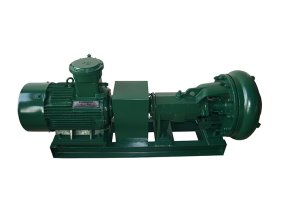Understanding Stainless Steel 304L Flanges Features and Applications
Stainless steel is a material that has become a cornerstone in various industries due to its excellent corrosion resistance, high strength, and aesthetic appeal. Among the myriad of stainless steel grades available, 304L stainless steel is particularly noteworthy, especially when discussing flanges. In this article, we will delve into the characteristics, benefits, and applications of stainless steel 304L flanges.
What is 304L Stainless Steel?
304L stainless steel is a low carbon version of the standard 304 stainless steel alloy. The primary distinction lies in its carbon content, which is limited to 0.03% maximum, as opposed to the 0.08% maximum found in standard 304 steel. This reduction in carbon content allows for improved corrosion resistance, especially in welded sections, since high carbon levels can result in the formation of carbides that lead to intergranular corrosion.
Features of 304L Stainless Steel Flanges
304L stainless steel flanges exhibit a series of key features that make them highly desirable for various applications
1. Corrosion Resistance The low carbon content in 304L stainless steel enables it to retain its corrosion resistance even after welding. This makes it an excellent choice for use in environments where corrosive media may be present.
2. Formability and Weldability 304L is known for its outstanding formability and weldability. It can be easily shaped and welded, making it suitable for manufacturing complex components and structures.
3. Temperature Resistance 304L stainless steel can perform well under high temperatures—up to approximately 870°C (1600°F) in intermittent use, and considerably lower for continuous use. This thermal resilience expands its operational capabilities in a variety of environments.
4. Mechanical Properties 304L stainless steel exhibits a good balance of strength and ductility, making it manageable in applications that require forming and machining.
stainless steel 304l flanges
5. Finish Options Flanges manufactured from 304L stainless steel can come in various surface finishes, such as polished, brushed, or even bead-blasted, allowing for both functional and aesthetic considerations.
Applications of 304L Stainless Steel Flanges
Due to their unique attributes, 304L stainless steel flanges find applications across a broad spectrum of industries
1. Chemical Processing The chemical industry often uses 304L flanges for piping and equipment that handle various chemicals. Their corrosion resistance ensures longevity and reliability in such applications.
2. Food and Beverage In the food and beverage sector, where hygiene is critical, 304L stainless steel flanges are favored because they do not harbor bacteria and are easy to clean. This is vital for ensuring safety and compliance with health regulations.
3. Oil and Gas The oil and gas industry often operates in harsh environments where resistance to corrosion is imperative. 304L flanges are commonly used in pipelines and machinery that transport various hydrocarbons.
4. Marine Applications Due to its resistance to saltwater, 304L stainless steel is suitable for marine applications, including boat fittings and offshore platforms.
5. Pharmaceuticals The stringent demands of the pharmaceutical industry regarding cleanliness and corrosion resistance make 304L flanges an ideal component in various systems.
Conclusion
Stainless steel 304L flanges are a vital component in many industrial applications due to their superior properties, including enhanced corrosion resistance, excellent weldability, and thermal stability. Their ability to meet the needs of industries ranging from chemical processing to pharmaceuticals underscores their versatility and importance in modern manufacturing. As technology and engineering continue to evolve, the role of 304L stainless steel flanges will undoubtedly expand, contributing to advancements across multiple sectors. Whether for new projects or replacing older components, 304L flanges remain a top choice for engineers and manufacturers alike.
 Linear Motion Shale Shaker In Drilling Rig
Linear Motion Shale Shaker In Drilling Rig  Oilfield Mud Cleaner
Oilfield Mud Cleaner  Drilling Fluid Decanter Centrifuge
Drilling Fluid Decanter Centrifuge  Drilling Mud Desander
Drilling Mud Desander  Hydrocyclone Desilter
Hydrocyclone Desilter  Centrifugal Pump/Centrifugal Mud Pump
Centrifugal Pump/Centrifugal Mud Pump  Shear Pump
Shear Pump  Jet Mud Mixer
Jet Mud Mixer  Horizontal Mud Agitator
Horizontal Mud Agitator  Constant Pressure Drilling Fluid Mud Gas Separator
Constant Pressure Drilling Fluid Mud Gas Separator  Mud Gun
Mud Gun  Mud Tank
Mud Tank  Solids Control System Vacuum Degasser
Solids Control System Vacuum Degasser  Flare Ignition Device
Flare Ignition Device  Diesel Tank
Diesel Tank  Submersible Slurry Pump
Submersible Slurry Pump 





































